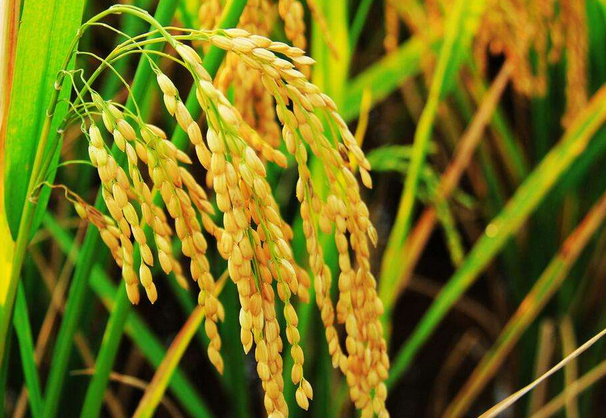Rice "dipper" refers to a configuration method of hybrid japonica rice and japonica rice cultivation, that is, the middle stalk hybrid japonica rice and the high stalk japonica rice variety are selected, and the wide rows in the broad and narrow rows of hybrid japonica rice are used, according to a certain band width. The planting method of single row japonica rice with different ratios and widths constitutes a complex of japonica hybrid rice and japonica rice in the same field. According to the principle of three-dimensional agriculture, using the characteristics of different varieties of rice, different maturity stages and different plant heights, intercropping cultivation, making the light and light resources more multi-layered, increasing the photosynthetic area and the accumulation of photosynthetic products, and improving the yield of rice Increase production of new technologies.
(1) The main advantages of the technology
1. Increase rice production. The experimental results show that, based on the large-area planting density, the intercropping species can increase the density and multi-layer three-dimensional utilization, and the yield per mu can be increased by 46.5 kg, which reduces the effect of increasing density. Increased rice paddy by 15.5 kg. According to the results of a large-scale typical comparison survey, the total of two crops in the daytime can increase the yield by 28 kg/mu compared with the net hybrid rice, which is about 110 kg more than the conventional japonica rice field.
2. Increase income. Indica rice is about 15% higher than the average hybrid japonica rice, which increases production and income. The total value of indica rice can increase by 50 yuan per mu and increase net income by 35 yuan.
3. Overcoming the problem of japonica rice net susceptibility, low yield, high quality hybrid japonica rice due to low net production and difficulty in promotion, enriching the market supply.
4. Standardize and improve the planting technique of hybrid mid-season rice. The interplanting blocks are planted in a semi-dry or wide-narrow row, and their cultivation techniques are relatively standardized. In the general field, the rice is planted with a row or a rope, and the planting density is improved, which promotes standardized cultivation of rice. Promotion and application of technology.

(2) Main cultivation techniques
1. Choose good varieties. Do a good job of matching the main plant and the works. The hybrid rice adopts Zhunyouyou 527, Jinyou 725 and other plants with moderate plant height, strong adaptability, high yield and excellent rice quality. The intercropped japonica rice should use stalks such as Yuyou No.1 and Jingjing No.1. Large varieties of spikes and high quality varieties.
2. Reasonable planting. Choose semi-dry wide or narrow row or wide row narrow plant and double plant hybrid rice, plant a row of high quality japonica rice between 4 rows (plant spacing 1.5 to 2 feet, planting 1200 to 1500 nests per mu), conventional japonica rice planting 4~ 6 strains, 2 hybrid indica rice nests.
3. Scientific fertilization. The special fertilizer for rice is used as the base fertilizer, and 40 to 50 kg per mu is applied. In the tillering period, 8 to 10 kg of urea is applied to the acre, and the ear is used for spraying the surface of the ear and the surface of the water with 50 to 60 kilograms of water.
4. Strengthen the comprehensive prevention and control of pests and diseases.
5, other supporting technical points of the day.
(1) Hybrid japonica rice is planted in the same period as japonica rice and planted in the same period.
(2) Seed treatment before seeding.
(3) Harvesting japonica rice or hybrid rice in a timely manner can retain the reclaimed rice.
(4) Other measures are the same as the main hybrid rice management.
Hand massager
Hand massager
Shenzhen Jie Zhong Lian Investment Co., Ltd. , https://www.szmeizons.com